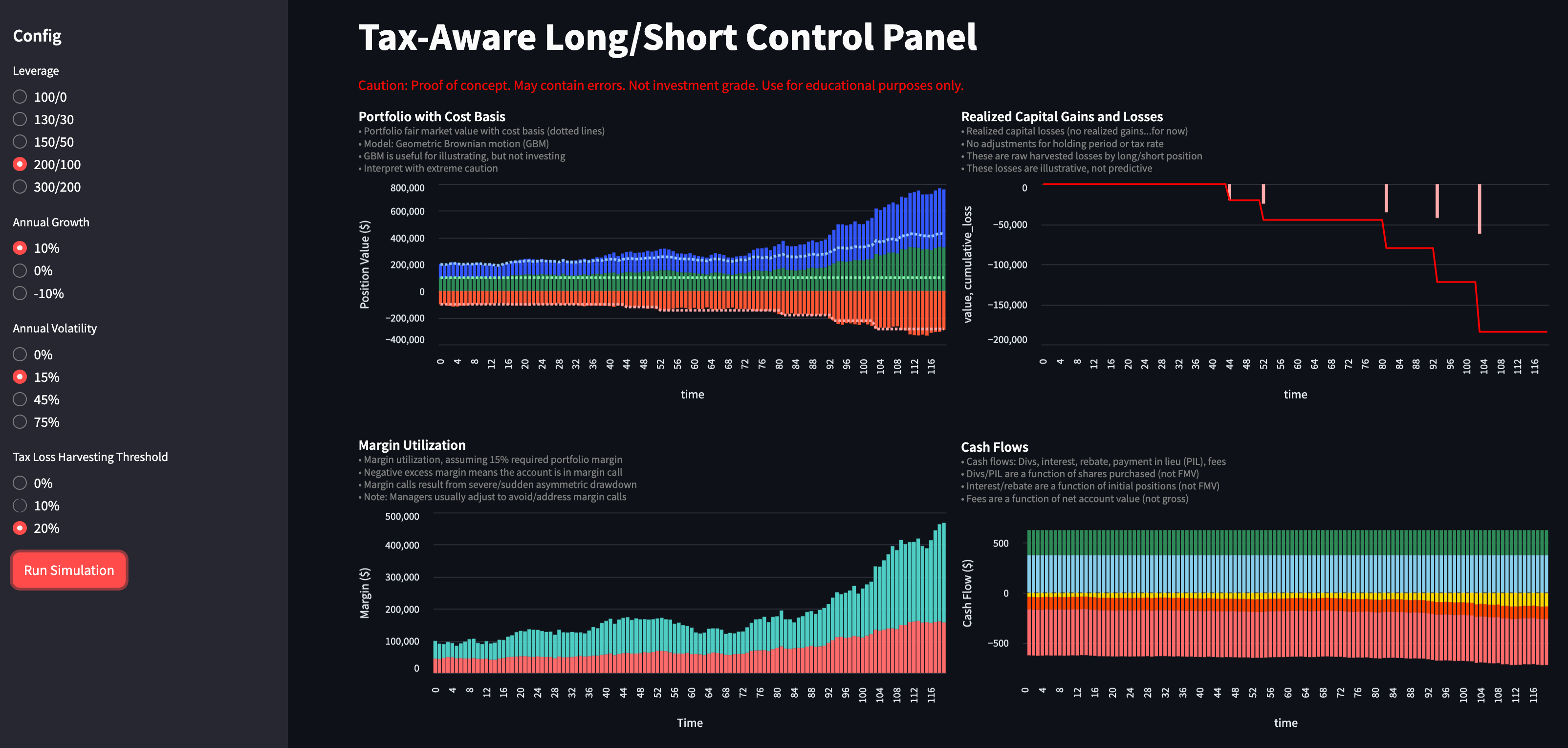I built a tax-aware long/short simulator/dashboard
A simulator anyone can use to kick the tires on tax-aware long/short... with caution
The promise of tax-aware long/short strategies like the 130/30, 200/100, and more, is pretax alpha plus a boatload of capital losses.
Here’s a 2-sentence, 2-image overview if you need to get up to speed on the hottest thing happening in taxable wealth (est. $55bn - $65bn AUM).
The losses are useful for offsetting realized gains in the immediate portfolio…



